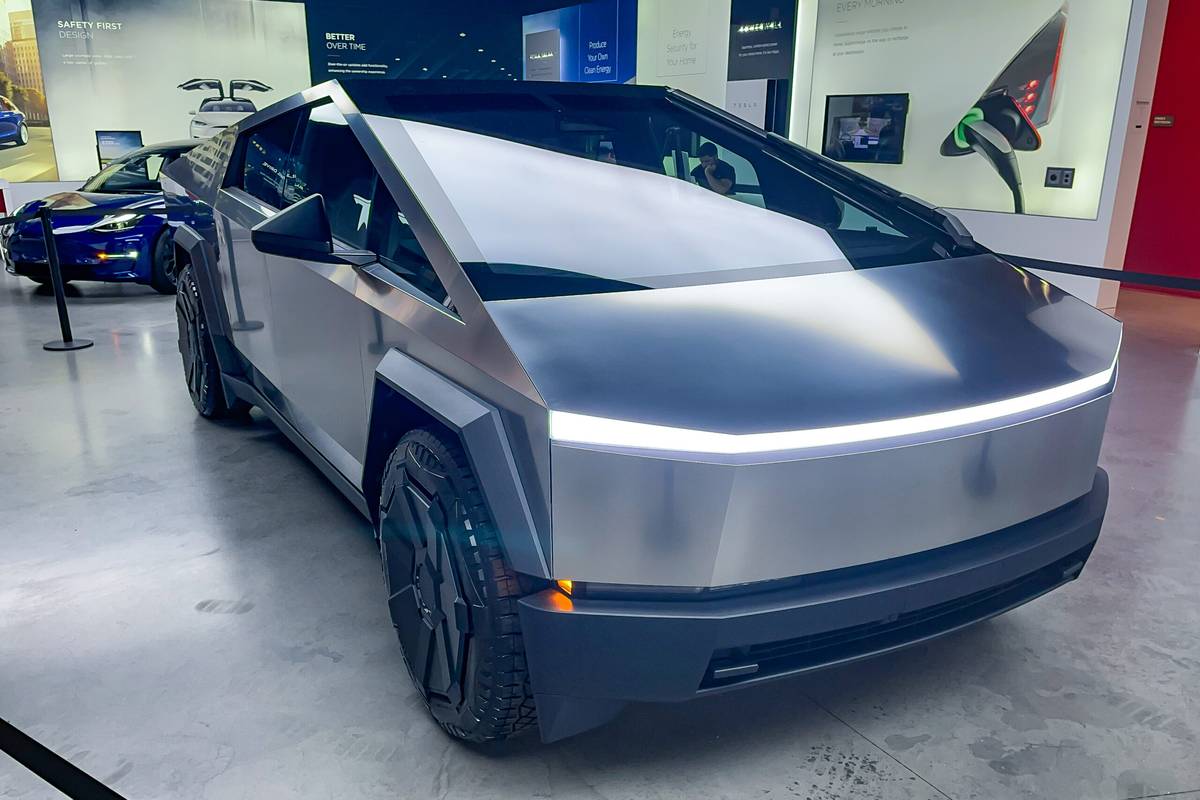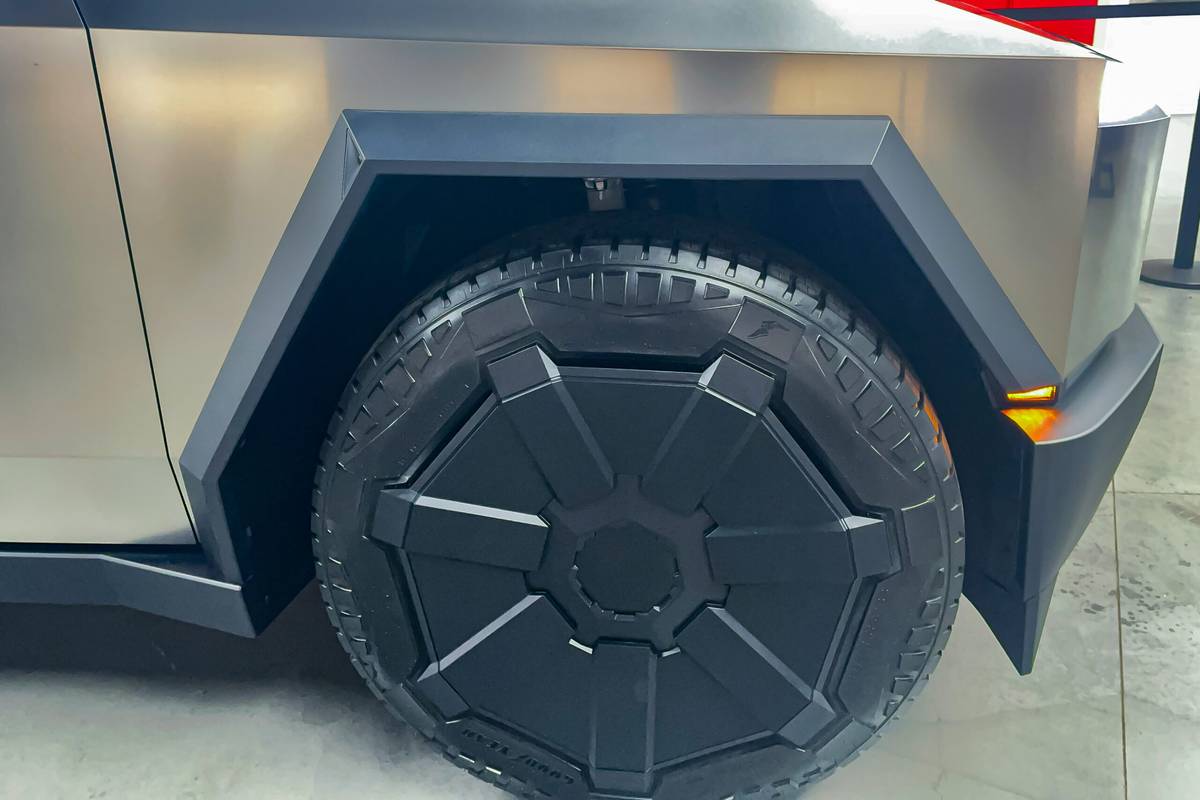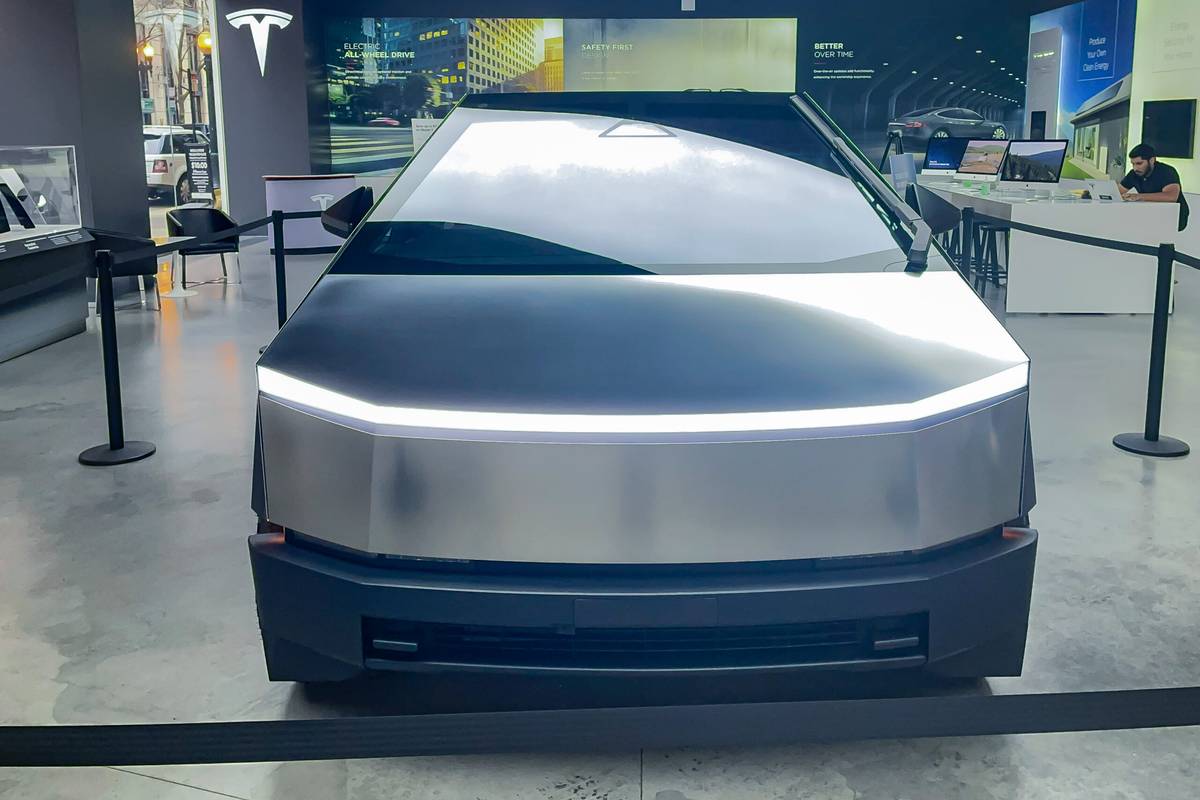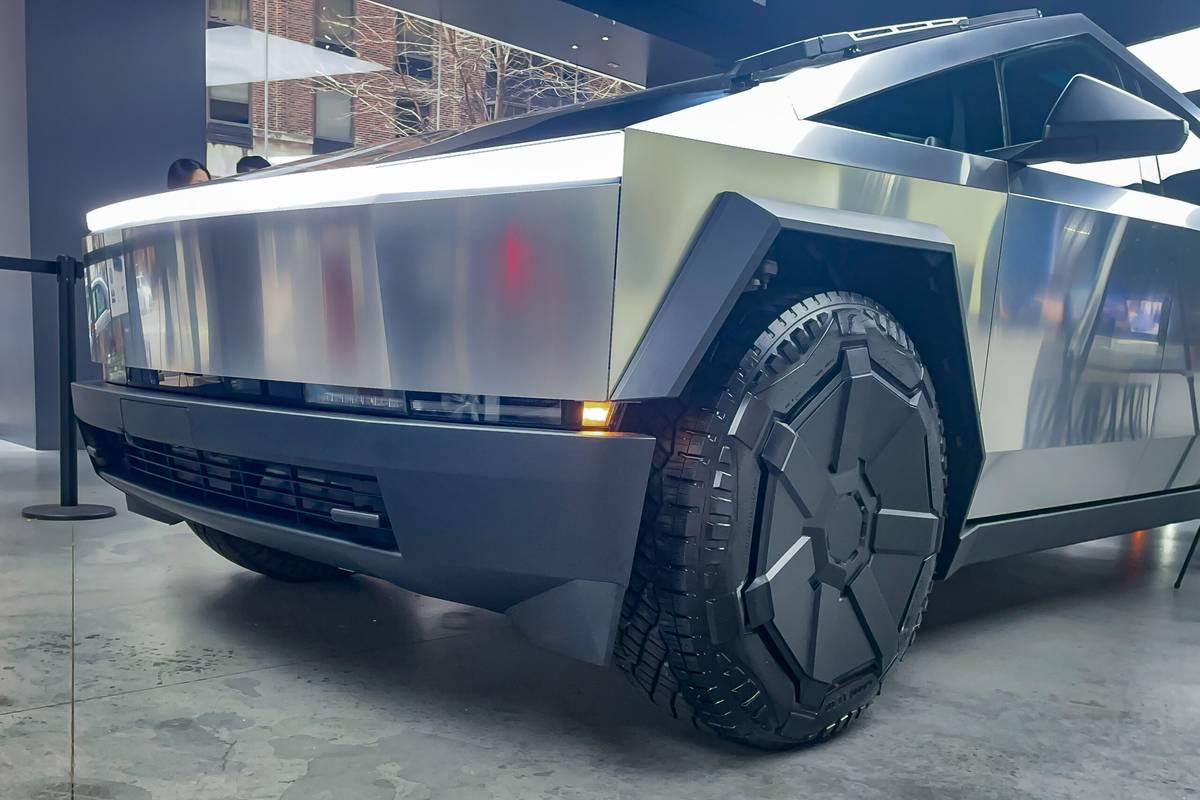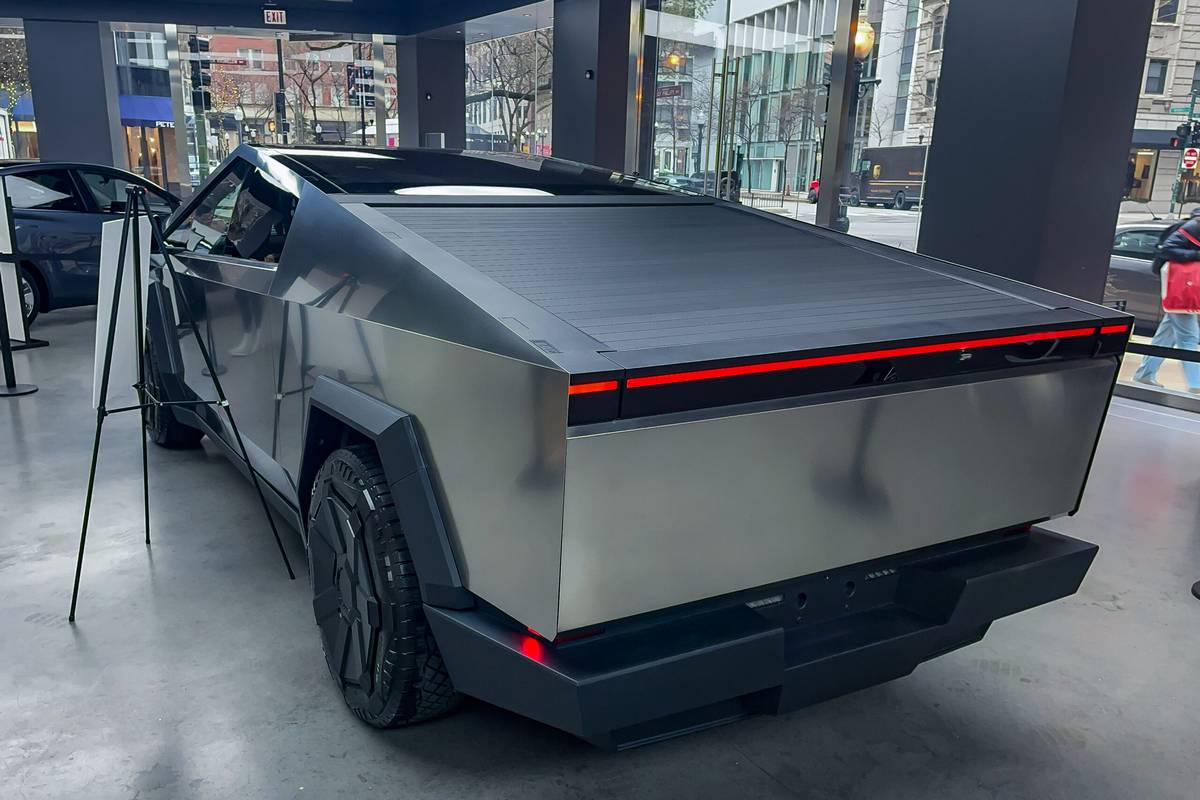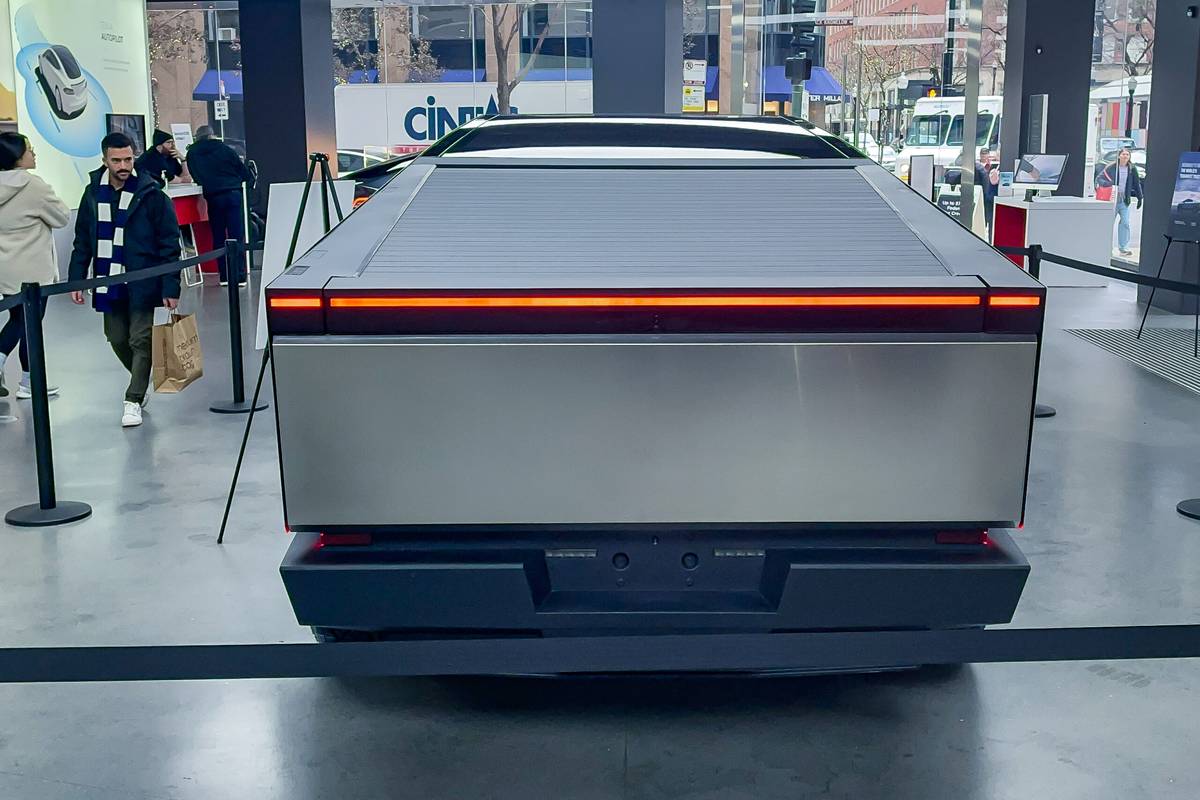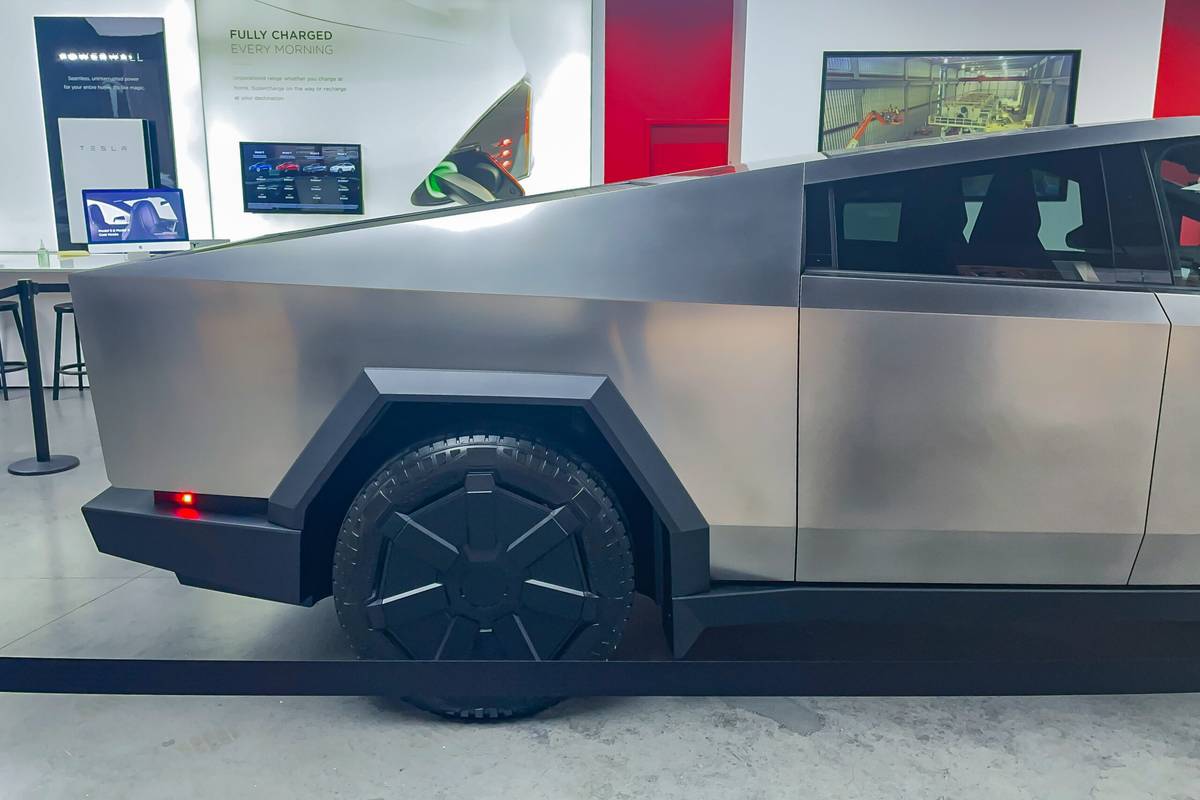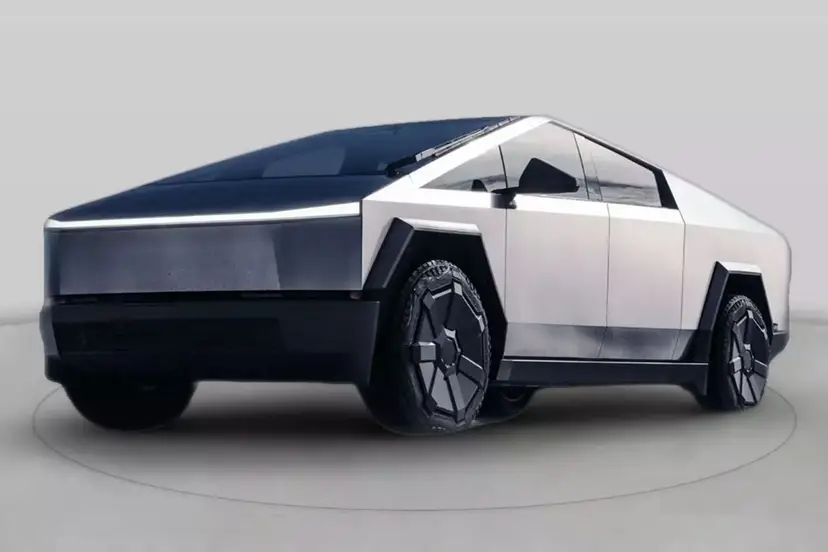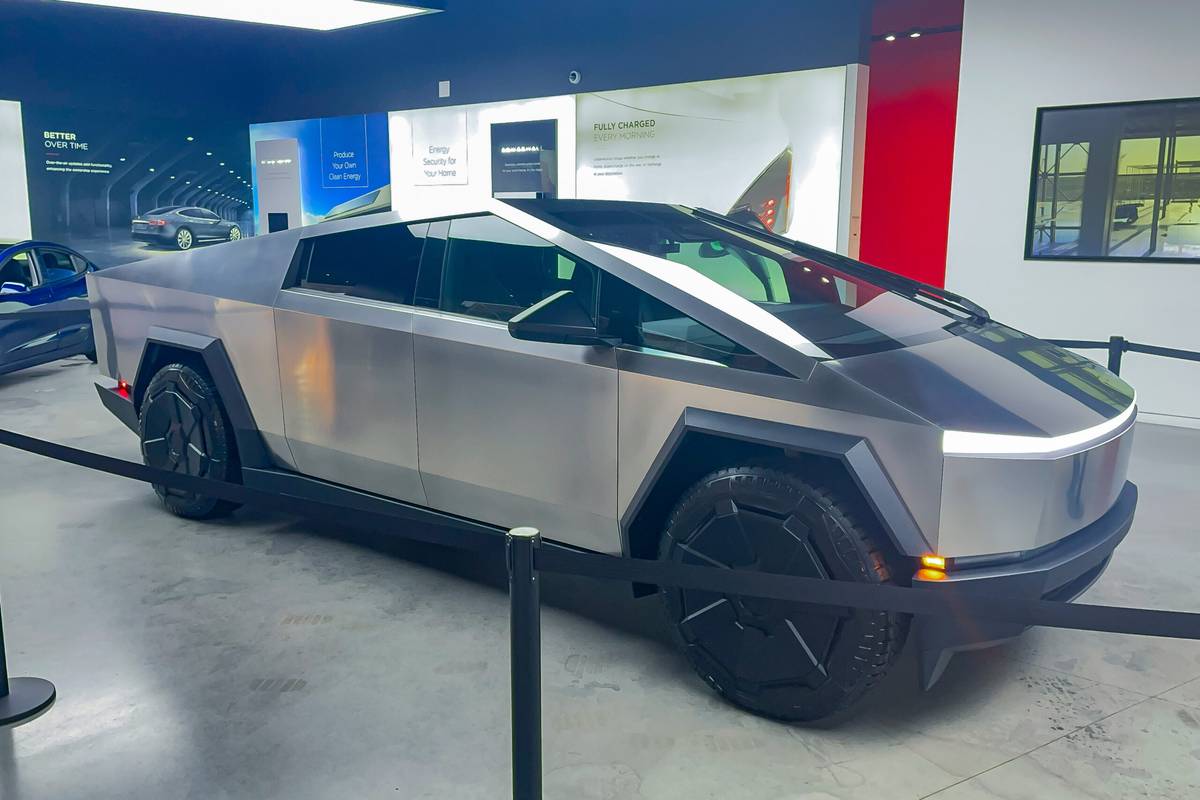
On Nov. 30, a select group of customers received the first deliveries of the long-awaited Tesla Cybertruck. Four years after its ignominious, window-cracking debut — and two years after it was supposed to arrive — the Cybertruck is finally a real production vehicle. To check one out in person, I traveled to a Tesla showroom in Chicago’s Gold Coast — a nontraditional automaker begets a nontraditional auto show.
Related: 2024 Tesla Cybertruck Deliveries Begin, More Specs and Estimated Pricing Revealed
An Outside View of the Inside
The floor model Cybertruck was roped off, unfortunately, so I have no interior impressions outside of what I’ve seen in official and third-party videos and what I could glean from looking through the windows.
The one notable interior feature to me was the borderline vestigial rearview mirror. With the bed’s tonneau cover closed, you cannot physically see out the back and must instead rely on a rear camera system that displays in the center touchscreen (a salesperson was kind enough to point out to me, a not-small human being, that the cover can support up to 300 pounds for … some reason). As someone prone to motion sickness, I might sacrifice the aerodynamics of the tonneau cover to use the rearview mirror, as rearview cameras make me queasy. The sharp angles of the body also make me wonder about ease of entry for the rear seats, but I couldn’t test that.
So, what about the exterior?
A Bleak Vision of the Future
In person, the Cybertruck looks smaller than I expected, though this was probably exacerbated by the display model sitting in the lowest ride height of its adaptive air suspension. Per Tesla, some (and possibly all) versions of the Cybertruck will have an Extract Mode with a maximum of more than 17 inches of ground clearance. In the showroom, the ride height was closer to that of a crossover. At nearly 224 inches long, the Cybertruck is closer in length to a Ford F-150 Lightning than a new Toyota Tacoma, and it’s about as wide as a full-size pickup truck.
The Cybertruck’s knobby off-road tires wear flimsy-looking wheel covers but fill the wheel wells better in person than they look to in photos (though that may be a trick of the ride height). There was an obvious panel gap issue at the tailgate, as well, but everything else seemed OK from what I could see in my brief visit. The gigantic single windshield wiper is an interesting choice, but I can’t fault it when indoors and stationary. Speaking of potential inclement weather, however, the exterior buttons for the tonneau cover and tailgate seem unnecessarily exposed to potential precipitation; hopefully they’re adequately protected from such obvious concerns.
While I was looking at the Cybertruck, various other people came by the showroom to check it out, and everyone who saw it while I was there marveled at its exterior styling. I’m not sure what that says about me, because I personally don’t care for the looks. Maybe you do.
More From Cars.com:
- How Does Tesla’s Cybertruck Actually Compare to a Ford F-150?
- Pickup Truck Buying Guide: How Much Truck Do You Need?
- Tesla Cybertruck: Impressive Specs, Killer Price, Polarizing Looks
- More Tesla News
- Find Your Next Car
Disappointing, But Promising Under the Skin
The shame of the Cybertruck, to me, is that the inspiration and exterior grab the spotlight from some of the actual innovations in the vehicle. It uses 48-volt architecture, a steer-by-wire steering system, is available with an optional range-extending battery and is powered by an entirely new battery pack. We’ll have to wait to drive a Cybertruck to evaluate those innovations, but there’s a lot of potentially cool stuff here — plus the eye-watering acceleration numbers.
It’s also worth pointing out what we were promised versus what we’ve received. At the Cybertruck reveal in 2019, the tri-motor truck that’s now named the Cyberbeast was supposed to have over 500 miles of range. With the range-extending battery — which eats into usable bed space and costs $16,000 as of this writing — the maximum range is 440 miles, up from 320 without the extra battery. The dual-motor all-wheel-drive Cybertruck presumably has the most standard range at 340 miles. That’s competitive for most of the electric pickup segment, but it’s not the new benchmark.
We were also promised 3,500 pounds of payload capacity and the ability to tow up to 14,000 pounds. What we’re getting is 2,500 pounds of payload and up to 11,000 pounds of towing (all manufacturer estimates). I’m not sure this matters a great deal; I can’t say that a Ford Maverick is all the truck most people would need and then say these numbers that far exceed it are bad, but we were promised more than we got. I also have a hard time viewing the Cybertruck as a true pickup. To me, it’s more of an electric Hyundai Santa Cruz.
The least surprising but most disappointing change from the reveal to delivery is the price. At the reveal, the targeted price for the tri-motor version was under $70,000. At launch, the estimated price for the Cyberbeast is $99,990, excluding a to-be-determined destination charge. That’s similar to other range-topping electric pickups but still unfortunate. If or when Tesla manages to scale up Cybertruck production, prices could drop, but as of now, the entire lineup is less attainable than promised. At least the Cyberbeast is a little bit quicker than the original estimates, with a 0-60 mph time of 2.6 seconds instead of 2.9.
Stay tuned for more fleshed-out impressions and a full review once we get behind the wheel of the all-new Cybertruck.
Related Video:
We cannot generate a video preview.
Cars.com’s Editorial department is your source for automotive news and reviews. In line with Cars.com’s long-standing ethics policy, editors and reviewers don’t accept gifts or free trips from automakers. The Editorial department is independent of Cars.com’s advertising, sales and sponsored content departments.




























